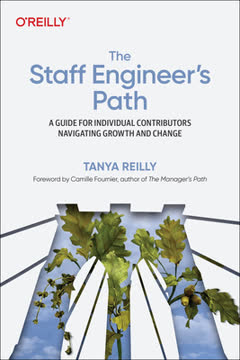つの重要なポイント
1. システム思考:世界を理解する新しいレンズ
システムとは、単なる物の集まりではない。システムは、何かを達成するために一貫して組織された相互に関連する要素の集合である。
全体的な視点。 システム思考は、私たちの周りの世界を理解するための強力な方法を提供する。それは要素そのものではなく、要素間の関係に焦点を当てる。このアプローチは、パターン、相互関係、大局を見渡すのに役立ち、孤立した詳細に迷い込むことを防ぐ。
実践的な応用。 システム思考は、生態学から経済学、個人的な関係からグローバルな問題に至るまで、さまざまな分野に応用できる。それは私たちに以下のことを助ける:
- 問題の根本原因を特定する
- 意図しない結果を予測する
- 変化のための効果的なレバレッジポイントを見つける
- 単純なルールから生じる複雑な行動を理解する
システムの視点を採用することで、私たちは世界の複雑さをよりよくナビゲートし、より情報に基づいた意思決定を行うことができる。
2. システム行動を形作るフィードバックループの力
フィードバックループは、システムの成長と安定のエンジンである。
フィードバックの種類。 フィードバックループには主に2つの種類がある:
- 強化ループ:変化を増幅し、成長または衰退を引き起こす
- バランスループ:変化を相殺し、安定を維持する
システムダイナミクス。 フィードバックループは、システムの多くの一般的な行動パターンの原因である:
- 指数関数的な成長または衰退
- 目標追求行動
- 振動
- オーバーシュートと崩壊
これらのフィードバック構造を理解することで、システムの行動を予測し、より効果的な介入を設計することができる。フィードバックループを特定し、修正することで、比較的小さな努力でシステム全体の行動を変えることができる。
3. ストックとフロー:システムの構成要素
ストックは、任意の時点で見ること、感じること、数えること、または測定することができるシステムの要素である。
基本概念。 ストックはシステム内の蓄積であり、フローはこれらのストックに影響を与える変化の速度である。例としては:
- ストック:バスタブの水
- インフロー:蛇口からの水
- アウトフロー:排水される水
システム行動。 ストックとフローの関係は、システムの多くの行動を決定する:
- インフローがアウトフローを上回ると、ストックは増加する
- アウトフローがインフローを上回ると、ストックは減少する
- インフローとアウトフローが等しいと、ストックは一定に保たれる
ストックとフローを理解することで、システムの行動を分析し、潜在的な問題を特定し、効果的な介入を設計するのに役立つ。システムの状態を変えようとする際には、両方を考慮することが重要である。
4. 遅延:システムの驚きの背後にある隠れた力
フィードバックループの遅延は、システム行動の重要な決定要因である。それらは振動の一般的な原因である。
遅延の種類。 システムにはさまざまな遅延が含まれることが多い:
- 情報遅延:データが収集され処理されるまでの時間
- 応答遅延:決定と行動の間の時間
- 配送遅延:変化が効果を発揮するまでの時間
遅延の結果。 遅延は以下のことを引き起こす:
- 目標のオーバーシュートまたはアンダーシュート
- 振動と不安定性
- 管理と制御の難しさ
遅延を認識し、考慮することは、システム設計と管理において重要である。それらを無視すると、過剰反応、不安定性、または効果のない介入につながる可能性がある。遅延に対処するための戦略には以下が含まれる:
- システムを遅くする
- 情報フローを改善する
- 将来のトレンドを予測する
5. レバレッジポイント:小さな変化が大きな影響を与える場所
レバレッジポイントは、力のポイントである。
レバレッジの階層。 メドウズは、システムにおける12のレバレッジポイントを、最も効果の低いものから最も効果の高いものまで特定している:
- 定数、パラメータ、数値
- バッファと安定化ストックのサイズ
- 物質的なストックとフローの構造
- 遅延の長さ
- バランスフィードバックループの強さ
- ポジティブフィードバックループのゲイン
- 情報フロー
- システムのルール
- システム構造を追加、変更、進化、または自己組織化する力
- システムの目標
- システムが生じるパラダイムまたは思考様式
- パラダイムを超越する力
戦略的介入。 レバレッジポイントを理解することで、以下のことが可能になる:
- システムに介入する最も効果的な場所を特定する
- 低レバレッジの変化に無駄な努力を避ける
- より回復力があり適応性のあるシステムを設計する
高レバレッジポイントに焦点を当てることで、最小限の努力で大きな変化を生み出し、より効果的な問題解決とシステム設計を実現することができる。
6. メンタルモデル:システムを認識するフィルター
常に覚えておいてほしいのは、あなたが知っているすべてのこと、そして誰もが知っているすべてのことは、単なるモデルに過ぎないということだ。
認識の形成。 私たちのメンタルモデルはフィルターとして機能し、システムをどのように認識し、相互作用するかに影響を与える:
- 何を見るか、何を見ないかを決定する
- 因果関係についての信念を形成する
- 決定と行動に影響を与える
メンタルモデルの改善。 システムをよりよく理解し、取り組むためには:
- 現在のモデルの限界を認識する
- 多様な視点を積極的に求める
- 新しい情報に基づいてモデルを更新し、修正する意欲を持つ
- システム思考ツールを使用してメンタルモデルをより明確にする
メンタルモデルを意識し、洗練することで、複雑なシステムを理解し、効果的に取り組む能力を向上させることができる。
7. レジリエンスと自己組織化:持続可能なシステムの重要な特性
システムは、生産性や安定性のためだけでなく、レジリエンス、すなわち外乱から回復する能力、自己修復する能力のためにも管理される必要がある。
レジリエンス。 レジリエントなシステムは以下のことができる:
- ショックや混乱を吸収する
- 変化する条件に適応する
- コア機能と構造を維持する
自己組織化。 自己組織化するシステムは以下のことができる:
- 新しい構造を作り出す
- 学習し、適応する
- 時間とともに複雑さを増す
システムにレジリエンスと自己組織化を促進することで、以下のことが可能になる:
- より持続可能なシステム
- 予期しない変化に対処する能力の向上
- 外部からの制御や管理の必要性の減少
これらの特性を念頭に置いてシステムを設計することで、複雑な問題に対するより堅牢で適応性のある持続可能な解決策を作り出すことができる。
8. 複雑なシステムの世界における短期的思考の落とし穴
産業社会の公式な時間軸は、次の選挙後や現在の投資の回収期間を超えて何が起こるかを考慮していない。
短期的な焦点の結果:
- 長期的な結果を見落とす
- ゆっくり変化する変数を無視する
- 重要なフィードバックループを見逃す
時間軸の拡大。 複雑なシステムでより良い意思決定を行うためには:
- 短期から長期まで、複数の時間スケールを考慮する
- ゆっくり変化する変数に注意を払う
- シナリオやモデルを使用して潜在的な長期的結果を探る
- 長期的な思考を奨励する政策や制度を設計する
長期的な視点を採用することで、複雑なシステムでより持続可能で効果的な意思決定を行い、意図しない結果を避け、より堅牢な解決策を作り出すことができる。
9. パラダイムを超越する:システムにおける最高のレバレッジポイント
パラダイムを変えることよりもさらに高いレバレッジポイントがある。それは、パラダイムの領域に執着せず、柔軟であり、どのパラダイムも「真実」ではないことを認識することである。
パラダイムを超えて。 システムにおける最高のレバレッジポイントは以下の能力である:
- すべてのパラダイムが現実の限られたモデルであることを認識する
- 複数の視点や思考方法に対してオープンである
- 状況のニーズに応じて思考を適応させる
超越の利点:
- 問題解決における柔軟性の向上
- 学際的なつながりを見つける能力の向上
- イノベーションと創造的思考の能力の向上
パラダイムを超越する能力を養うことで、複雑なシステムに対してより賢明で創造的かつ効果的にアプローチし、より全体的で持続可能な解決策を導き出すことができる。
10. システムの世界に生きる:日常生活のための実践的ガイドライン
システムに自分の意志を押し付けることはできない。システムが私たちに何を伝えているかを聞き、その特性と私たちの価値観が協力して、私たちの意志だけでは生み出せない何かを生み出す方法を見つけることができる。
実践的な知恵。 システムの世界で効果的に生きるためには:
- 謙虚さと学ぶ意欲
- フィードバックとシステム行動への注意
- 複雑さと不確実性への尊重
日常生活におけるシステム思考のガイドライン:
- 介入する前にシステムのリズムをつかむ
- 自分のメンタルモデルを明るみに出す
- 情報を尊重し、共有する
- 言語を慎重に使い、システム概念で豊かにする
- 重要なことに注意を払い、定量化できることだけにとらわれない
- フィードバックシステムのためのフィードバックポリシーを作成する
- 全体の善を目指す
- システムの知恵に耳を傾ける
- システム内の責任を見つける
- 謙虚であり続け、学び続ける
- 複雑さを祝う
- 時間軸を拡大する
- 学問の枠を超える
- ケアの境界を広げる
これらの原則を日常生活に取り入れることで、より効果的なシステム思考者となり、周囲の複雑な世界をよりよくナビゲートすることができる。
最終更新日:
FAQ
What's Thinking in Systems: A Primer about?
- Understanding complex systems: The book introduces systems thinking, focusing on how interconnected elements create behaviors over time. It emphasizes that systems are more than just the sum of their parts.
- Feedback loops and structure: It highlights the role of feedback loops and system structure in determining behavior, illustrating how these can lead to stability or instability.
- Real-world applications: The concepts are applicable across various fields, including economics, ecology, and social sciences, making it relevant for understanding complex interactions in the world.
Why should I read Thinking in Systems: A Primer?
- Practical insights: The book offers practical insights into managing and redesigning systems, beneficial for business, policy-making, or environmental management.
- Framework for problem-solving: It provides a framework for identifying root causes of problems and recognizing opportunities for change, essential in today’s complex world.
- Learn from an expert: Written by Donella Meadows, a renowned systems thinker, the book makes complex concepts accessible to a wide audience.
What are the key takeaways of Thinking in Systems: A Primer?
- Systems cause their own behavior: Systems largely produce their own behavior through their structure, leading to surprising outcomes.
- Importance of leverage points: Identifying leverage points—places where a small change can lead to significant impacts—is crucial for effective intervention.
- Interconnectedness of systems: Understanding the connections within systems is vital for addressing complex issues effectively.
What are the best quotes from Thinking in Systems: A Primer and what do they mean?
- “The system, to a large extent, causes its own behavior!” This quote encapsulates the idea that the structure of a system largely determines how it behaves.
- “A stitch in time saves nine.” This proverb highlights the importance of addressing problems early before they escalate.
- “There are no separate systems.” This emphasizes the interconnectedness of all systems, suggesting that understanding one requires considering its relationships with others.
What is a system according to Thinking in Systems: A Primer?
- Definition of a system: A system is a set of interconnected elements that produce their own pattern of behavior over time.
- Elements and interconnections: Systems consist of elements, interconnections, and a function or purpose, with behavior emerging from these interactions.
- Examples of systems: Ecosystems, economies, and organizations are examples, illustrating that systems can be found in various contexts and scales.
What are feedback loops and why are they important in Thinking in Systems: A Primer?
- Types of feedback loops: Feedback loops can be balancing (stabilizing) or reinforcing (amplifying), influencing system behavior.
- Impact on system behavior: They determine how a system responds to changes, affecting its stability and resilience.
- Real-world implications: Feedback loops can lead to both positive and negative outcomes in real-world systems, such as in economics and ecology.
What are leverage points in systems according to Thinking in Systems: A Primer?
- Definition of leverage points: Specific places within a system where a small change can lead to significant shifts in behavior.
- Types of leverage points: They range from changing parameters to altering the system's goals or structure, with varying effectiveness.
- Practical application: Understanding leverage points allows for focusing efforts on impactful changes, enhancing positive outcomes in complex systems.
How does Thinking in Systems: A Primer address the concept of resilience?
- Definition of resilience: Resilience is a system's ability to bounce back from disturbances and maintain core functions.
- Importance of feedback loops: Resilience arises from a rich structure of feedback loops that restore a system after perturbations.
- Examples of resilient systems: Ecosystems and human communities that adapt to crises illustrate the practical importance of resilience.
What is self-organization in systems as discussed in Thinking in Systems: A Primer?
- Definition of self-organization: A system's ability to create new structures and complexity from within, often without external direction.
- Examples of self-organization: Complex ecosystems and social structures develop through simple rules leading to intricate patterns.
- Implications for management: Recognizing self-organization can inform management practices, fostering creativity and adaptability.
How does hierarchy function in systems according to Thinking in Systems: A Primer?
- Definition of hierarchy: A structure where subsystems are organized into larger systems, allowing for stability and efficiency.
- Benefits of hierarchical organization: Hierarchies manage complexity by allowing subsystems to operate semi-independently while contributing to overall goals.
- Challenges of hierarchy: Potential downsides include suboptimization and overcontrol, requiring balance between autonomy and coordination.
What is the concept of bounded rationality in Thinking in Systems: A Primer?
- Limited decision-making capacity: Bounded rationality refers to decisions made based on limited information and cognitive constraints.
- Influence on system behavior: It can lead to decisions that do not align with the overall welfare of the system.
- Need for better information: Improving information available to decision-makers can enhance their ability to act in ways that benefit the system.
What are system traps and how can they be addressed according to Thinking in Systems: A Primer?
- Common problematic patterns: System traps are recurring patterns leading to undesirable outcomes, such as policy resistance.
- Recognizing and escaping traps: Addressing traps involves recognizing them early and understanding their structures.
- Transforming traps into opportunities: By reframing challenges and engaging stakeholders, it is possible to create effective and sustainable solutions.
レビュー
本書『システム思考』は、システム思考の入門書として広く称賛されており、さまざまな分野における複雑なシステムを理解するための貴重な洞察を提供している。読者は、メドウズの明快な説明、実践的な例、そして思考を刺激するアイデアを高く評価している。多くの人々がこの本を読んで、問題解決や意思決定に対する視点が変わったと感じている。一部にはそのシンプルさや古い例に対する批判もあるが、システム分析に興味がある人にとって必読の書であることに多くの人が同意している。本書の概念は、個人的、職業的、そしてグローバルな課題に適用可能であると見なされている。
Similar Books














